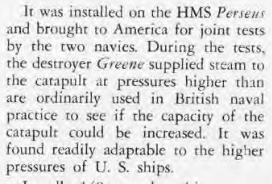The helicopter carrier has always struck me as a hangover from the big cruiser.
The RN had sufficient flat tops available for fast conversion to ASW carriers. The two Commando ships (Bulwark and Albion) could have shipped ASW Wessex and Seaking helos as Hermes did in the 70s (followed by Bulwark).
A combined Commando/ASW carrier design to replace Bulwark and Albion was looked at but the Through Deck/Command Cruiser was developed instead.
To see why, you have only to look at the elegant Italian Terrier equipped cruisers which entered service in the 60s.with large helo decks after. France planned a similar Masurca equipped ship.
Mention is made that Lord Mountbatten hankered after the cruiser.
The conversion of Blake and Tiger was pure folly. The smaller RFA Engadine showed how an effective helo ship could have been added quickly and cheaply.
So you're advocating for a more versatile, multi-role vessel like the
Vittorio Veneto, as opposed to specialised vessels like the
Invincible class
uk 75?
Regards
Pioneer
No since the UK had enough carriers available to carry Wessex or Seaking ASW I would have scrapped the Tigers or "dumped" them on foreign nations.
The Invincibles were an expensive way of carrying ASW helicopters and their Seadart was removed after the Cold War.
The Tigers only carried 4 Seakings. The much smaller Engadine showed a simple vessel could carry them.
HMS Ocean showed how a cheap LPH could handle the Commandio and ASW helo roles.

